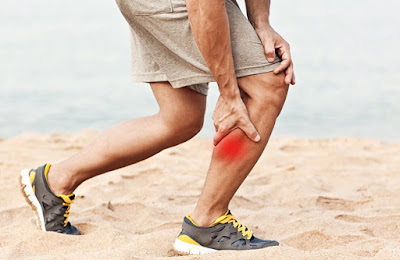“How long will it take to heal?” is a question that we, alongside every other health practitioner, hear many times a day when diagnosing a condition or talking to patients about their recovery. And rightly so – It’s important that you know what you can expect and be able to plan the following weeks or months around your recovery.
Unfortunately, overly-optimistic perceived recovery times is a common trend we’ve noticed over the last years and after some research can conclude that this seems to be the case across numerous healthcare disciplines, injuries and procedures. Because recovering slower than perceived can have a significant negative impact on a person’s mental, emotional and physical health, we thought we’d talk about WHY these variances in recovery can occur and what you can expect from us here at Sole Motion Podiatry.
WHY ARE THERE LARGE DISCREPANCIES IN RECOVERING FROM THE SAME INJURY?
It all begins with being able to receive so much information from so many sources about recovery. With so many statistics on-hand at the touch of a screen, we are constantly being surrounded with this information (if we look for it) without considering whether it is specific to us and our personal circumstances.
If you look for it online, you’ll undoubtedly find someone that recovered from their tendinopathy or muscle strain in just two weeks, as opposed to the recommended 6-8 weeks. For patients, this can plant the seed for a very optimistic recovery time.
The truth is that just because you and the person next to you both have ‘plantar fasciitis’ or ‘achilles tendinopathy’, does not mean your injury is the same or that you will experience the same recovery process. That blanket term for your injury provides no detail on:
- The extent of the damage to your tendon, muscle, joint or ligament
- If a tear is present, and if so, how big the tear is
- Whether the injury is an acute one-off injury or it has been building up and weakening over many months
- What bio-mechanical, physical and other factors are contributing to the development of your injury (and contributing to its progression and future recurrence)
- Your muscle strength, previous injuries, the composition of tissues and bones that will affect your recovery process
- Your overall health and body’s ability to efficiently heal and repair
- Anatomical and biomechanical variances that may slow down or speed up your recovery
And the list can go on. The reality is that you are unique, your injury is unique, and while we can give you a general idea of a recovery time, your personal recovery process will be unique, and you can’t compare yourself to anyone else – especially people you know nothing about online other than that they have an injury in a similar area to you. This is also why estimated recovery periods can be so broad (much to the patient’s displeasure), such as saying approximately 12 – 16 weeks.
IT’S NOT JUST ABOUT YOUR CHOSEN TREATMENT
While different treatment options may also present significant variances in recovery time, there’s also a lot more to the story. When two patients undergo the same treatment for their injuries, even though their injuries may have differing levels of seriousness and differing causes, they will also approach their treatment differently. You will differ in:
- How much time you are spending resting the foot
- The measures you take to offload your injury
- The time spent icing, protecting, compressing and elevating the foot
- The daily adherence to strengthening, stretching and physical therapy exercises
- How closely you adhere to each component of your treatment plan
- How quickly you return to physical activity
The way you approach the above will result in varying recovery times, even if all the other factors were relatively similar. While we provide you with all the information and treatment modalities you need for optimal recovery, it is your actions that will impact how effectively and efficiently your recovery goes.
This is why it’s always important to follow the advice of your health practitioner carefully, and listen to their estimation of your recovery time, which will take into consideration your personal circumstances.
REMEMBER
To recover from pain is relatively quick and easy, but to recover from injury and get your muscles and tissues back to their full functioning capacity takes MUCH longer.
For more information on how to maximise your recovery and get back to your best, give our fantastic Podiatry Specialists a call on 1300-FX-FEET. We are not only experts in the field of sports medicine, but are equipped with leading technology, such as the THOR laser, to speed up the repair and recovery of various musculoskeletal injuries and tendinopathies.

No comments:
Post a Comment